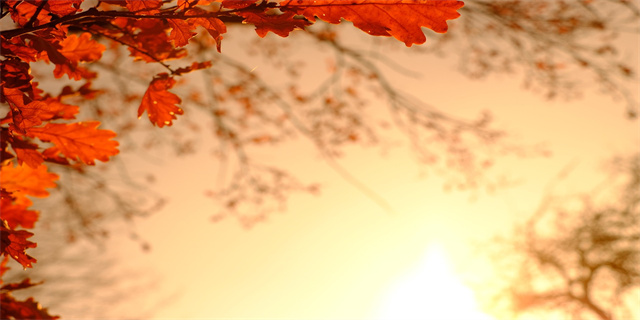首页 > 趣味生活 正文
Exploring the World of Witchcraft
The History of Witchcraft
Witchcraft, also known as witchery or spellcraft, is a practice that dates back centuries. It embodies the belief in supernatural powers and the ability to manipulate energy and forces to bring about desired outcomes. The history of witchcraft is a fascinating journey through time, filled with tales of both enchantment and persecution.
The Practices and Rituals of Witchcraft
Witchcraft encompasses a diverse range of practices and rituals that vary across cultures and traditions. The craft often involves the use of spells, potions, and divination tools to communicate with the spiritual realm and harness its power. Witches, also known as practitioners or spellcasters, may engage in ceremonies, called rituals, to manifest their intentions and connect with different aspects of nature and the divine.
Modern Witchcraft and its Popularity
In recent years, there has been a resurgence of interest in witchcraft, particularly among young adults. This modern wave of witchery embraces alternative spiritualities, self-empowerment, and the celebration of nature. Modern witches often incorporate elements of paganism, Wicca, or other spiritual practices into their craft. Social media platforms have played a significant role in creating an online community where witches can connect, share knowledge, and celebrate their beliefs.The history of witchcraft is deeply intertwined with human civilization. Despite being shrouded in mystery and often misunderstood, witchery continues to captivate the imagination of many. From ancient potions to contemporary rituals, the practices and rituals associated with witchcraft have evolved and adapted over time.

Witchcraft can be traced back to ancient civilizations, with its roots in folklore and the supernatural. In ancient Egypt, for example, magic was an integral part of religious ceremonies, seen as a means to communicate with deities and gain their favor. Similarly, in Greco-Roman mythology, witches were said to possess the ability to cast spells and influence the course of events.
The Middle Ages witnessed a darker period in the history of witchcraft. The witch hunts and trials that took place during this time led to the persecution and execution of thousands of individuals, mostly women, accused of practicing witchcraft. These trials were fueled by a fear and suspicion of witchcraft, often based on superstitions and religious beliefs. It was believed that witches made pacts with the devil and used their powers to harm others.
The practices and rituals associated with witchcraft are as diverse as the cultures and traditions in which they arise. Witches may use various tools and techniques to enhance their spellcasting abilities and connect with the spiritual realm. These tools can range from crystals, herbs, and candles to tarot cards, cauldrons, and athames (ritual knives). Witches may perform rituals in sacred spaces such as gardens, forests, or specially designated areas within their homes.
Spells are an integral part of witchcraft practices. They involve the use of specific words, actions, and ingredients to manifest desired outcomes. Spells can be used for various purposes, such as love, protection, prosperity, and healing. Some witches also practice divination, which involves seeking insight or guidance through tools like tarot cards, pendulums, or scrying mirrors.
The modern witchcraft movement, commonly referred to as Neo-Paganism or Wicca, emerged in the mid-20th century. Influenced by feminist and countercultural movements, modern witches embrace a more inclusive and nature-centered approach to the craft. Wicca, in particular, revolves around the worship of a dual deity (the God and the Goddess) and emphasizes harmony with nature. Modern witches often celebrate the cycles of the moon and the changing seasons through rituals and festivals.
The rise of social media platforms has contributed to the growing popularity of witchcraft. Websites, blogs, and online communities dedicated to witchcraft allow individuals to share knowledge, connect with like-minded practitioners, and explore different aspects of the craft. Hashtags such as #witchesofinstagram and #witchyvibes have become popular, creating a virtual space where witches can showcase their altars, spells, and rituals.
In conclusion, the world of witchcraft is one that continues to captivate and intrigue, bridging ancient traditions with modern interpretations. From its complex history to its diverse practices, witchery remains a rich tapestry of beliefs, rituals, and spellcasting. Whether exploring the roots of witchcraft or embracing its contemporary resurgence, it's a realm where the mystical and the mundane coexist.
猜你喜欢
- 2024-01-07 北京同仁医院眼科专家(北京同仁医院眼科专家分享眼健康的重要性)
- 2024-01-07 当路人拥有绝世美貌(路人的奇幻之旅:当平凡路人拥有绝世美貌)
- 2024-01-07 促进剂tmtd(促进剂TMTD的作用及应用)
- 2024-01-07 witchery(Exploring the World of Witchcraft)
- 2024-01-07 windows10升级工具(升级你的Windows系统:使用Windows10升级工具)
- 2024-01-07 word密码破解(Word密码恢复攻略)
- 2024-01-07 webuploader(Webuploader:实现网页文件上传的强大工具)
- 2024-01-06 安徽省税务局网站(安徽省税务局官网:助您畅通纳税之路)
- 2024-01-06 wholesome(Spread Joy and Kindness Embracing Wholesomeness in Everyday Life)
- 2024-01-06 宝马m3e92(宝马M3E92 – 奔驰于机械与激情之间)
- 2024-01-06 大自然的语言教案(自然之美:探索大自然的语言教案)
- 2024-01-06 柴油皮卡车大全(柴油皮卡车:一本大全指南)
- 2024-01-07北京同仁医院眼科专家(北京同仁医院眼科专家分享眼健康的重要性)
- 2024-01-07当路人拥有绝世美貌(路人的奇幻之旅:当平凡路人拥有绝世美貌)
- 2024-01-07促进剂tmtd(促进剂TMTD的作用及应用)
- 2024-01-07witchery(Exploring the World of Witchcraft)
- 2024-01-07windows10升级工具(升级你的Windows系统:使用Windows10升级工具)
- 2024-01-07word密码破解(Word密码恢复攻略)
- 2024-01-07webuploader(Webuploader:实现网页文件上传的强大工具)
- 2024-01-06安徽省税务局网站(安徽省税务局官网:助您畅通纳税之路)
- 2023-02-24大盘鸡的家常做法(家常版大盘鸡,方法简单,好吃接地气,吃完汤汁拌面,真过瘾)
- 2023-02-24大连在哪个省(东北三省最发达的城市——大连)
- 2023-02-24大麦茶怎么泡(大麦茶怎么泡?)
- 2023-02-24河蚌怎么处理(为什么在农村很少人吃河蚌?)
- 2023-02-24牛肉丸子的做法(自制纯手工牛肉丸,劲道弹性足,鲜香有嚼劲)
- 2023-02-24浏览器兼容性(浏览器兼容模式怎么设置?)
- 2023-02-24zuoche(领导开车的礼仪)
- 2023-02-24获取ip地址(如何查看电脑ip地址?)
- 2024-01-06安徽省税务局网站(安徽省税务局官网:助您畅通纳税之路)
- 2024-01-06奥迪最新款a6l中央屏幕黑屏怎么回事(为何奥迪A6L的中央屏幕会出现黑屏现象?)
- 2024-01-05安全气囊气体发生器(安全气囊气体生成器:保护你的生命安全)
- 2024-01-05windows2003(Windows Server 2003 A Powerful Operating System for Enterprises)
- 2024-01-05承德人事考试网(承德人才招聘网站的发展趋势)
- 2024-01-05帝国全面战争下载(帝国全面战争免费下载,征战世界的时刻来临了!)
- 2024-01-05wiggle海淘(Wiggle购物网站——让你海淘玩转全球)
- 2024-01-04城堡破坏者攻略(城堡攻防大作战)
- 猜你喜欢
-
- 北京同仁医院眼科专家(北京同仁医院眼科专家分享眼健康的重要性)
- 当路人拥有绝世美貌(路人的奇幻之旅:当平凡路人拥有绝世美貌)
- 促进剂tmtd(促进剂TMTD的作用及应用)
- witchery(Exploring the World of Witchcraft)
- windows10升级工具(升级你的Windows系统:使用Windows10升级工具)
- word密码破解(Word密码恢复攻略)
- webuploader(Webuploader:实现网页文件上传的强大工具)
- 安徽省税务局网站(安徽省税务局官网:助您畅通纳税之路)
- wholesome(Spread Joy and Kindness Embracing Wholesomeness in Everyday Life)
- 宝马m3e92(宝马M3E92 – 奔驰于机械与激情之间)
- 大自然的语言教案(自然之美:探索大自然的语言教案)
- 柴油皮卡车大全(柴油皮卡车:一本大全指南)
- winpard(Winpard A Cutting-Edge Solution for Windows Users)
- windows平板(Windows平板:让生活更便捷)
- 奥迪最新款a6l中央屏幕黑屏怎么回事(为何奥迪A6L的中央屏幕会出现黑屏现象?)
- 安徽宿州技师学院(安徽宿州技师学院:助力青年成就梦想)
- 大学入党申请书(大学入党申请书)
- 大学生职业规划书(大学生职业发展规划)
- 百分网网站的链接(了解百分网,让你的商务合作更顺利)
- win10任务栏透明(Windows 10 任务栏的半透明效果:给桌面增添无限魅力)
- 奔驰c200l(奔驰C200L:领先的豪华座驾)
- 初二英语上册知识点(Important Knowledge Points in Grade 8 English Book I)
- webcheck(Web Security Check Ensuring a Safe Online Experience)
- 霸气十足的近义词(WordsofPower)
- winform(使用Winform创建桌面应用程序)
- win98模拟器(重回90年代:Win98模拟器使用指南)
- windowsoffice(Windows Office Enhancing Productivity and Efficiency)
- 安全气囊气体发生器(安全气囊气体生成器:保护你的生命安全)
- 博登海默法理学(博登海默法理学:解读法律原则的辩证关系)
- 磁力连接磁力搜索引擎(磁力链接搜索引擎:释放你的下载潜力)
